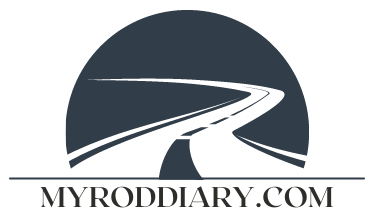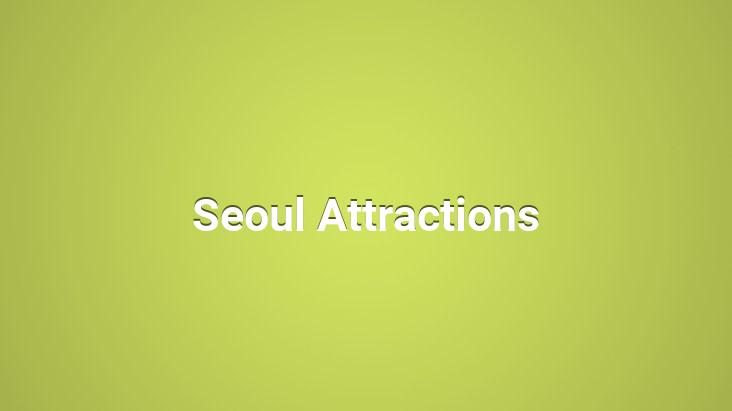Seoul Before we go to our list of places to visit in Seoul, let’s say a few words about South Korea.
The capital of South Korea is also the mega city “Seoul”. As a result of the serious damage done to the country by the Korean War, Seoul, which has become an urban ugliness, is a city that has succeeded in being an industrial power and working with all its strength to introduce itself to the world. Designed and rebuilt according to Feng Shui, thought through to the details.. Seoul, which is now one of the most modern cities in the world, is also known as the city of culture and art with hundreds of art festivals held every year.
We can understand the importance of the country, where the per capita income is 20,000 dollars, to English, from the English written on each of the signs and from the English education given from kindergarten to the last year of university.
South Korea’s Its largest city, Seoul, is a city that does not compromise on its order with its skyscrapers that do not fit into the frame, the Han river flowing through the middle of the city, the width of which reaches 1 km, temples and wide streets.
It is the most lively city in the world, which pleases its visitors as well as its people, with its old, new, different tastes, shopping diversity and culture and art activities.
Now let’s come to Seoul, the capital of South Korea to the list of places to visit;
Hongdae District : Various shops and nightclubs where Hongik university is lively, young generation is predominantly It is a region famous for. We would like to underline that there are nearly 50 night music clubs in the area.
Transportation : Address : Seogyo-dong, Mapo-gu, Seoul Green line (Line 2) Hongik You can get off at the university stop and use the exits 8 and 9.
Han River and Colorful Fountain : Han river with a width of 1 km There are 12 parks in total around. Not only is it limited to parks, but 70 km of bicycle paths on both sides of the river are an indispensable location for sports lovers.
Banpo bridge (Banpodaegyo) is only one of the bridges over the Han river.. Its feature offers a wonderful visual feast for 15 minutes, with 380 fountains each day, accompanied by squirting waters and colors.
This event, which is held every year between April and October, is free for all visitors.. Click here for show times.
Transport : Banpo-dong, Seocho-gu, Take the 9th subway right to Seoul-si and get off at Sinbanpo station and use exit 1 or 4. You can come by subway line and get off at Dongjak station and take exit 1 or 2 is the point with a view. It takes less than 10 minutes to pay 8500 Won round trip for the cable car. If you do not want to ride, it is possible to reach the tower by walking for 40 minutes.. There are souvenir shops and cafes around the tower.. After buying the tickets, take the elevator to the top of the tower.. They did a nice thing thanks to the LCD screen they put inside when going out with the elevator.. Reaching the tower after 40 seconds. Lovers hung their locks on the iron bars around the roof on the hill. Have a lock with you if you want to hang it.
Entry Fee 10,000 Won – Child 8000 Won
Cable Car one way : 6000 Won – Child 3500 Won
Cable Car two way : 8500 Won – Child 5500 Won
Transportation : 105, Namsangongwon-gil, Yongsan-gu, SeoulMetro 1 or 4. You should use the line and use exit 9 to get off at Seoul station, use Metro line 6 and use exit 4 at Itaewon rebellion. You can reach the tower for 1200 Won by taking bus number 2, which departs every 20 minutes at both exits.
Korean National Museum : If you come to Korea and do not want to return without learning its history, you should definitely step here. The main exhibition area of the museum, which is closed on January 1 and every Sunday It is free for all visitors and special exhibition areas are paid.
Transportation : 137 Seobinggo-ro, Yongsan-gu, Seoul, Metro 4. You should get off at Ichon station with the line and use exit 2. It is 150 meters ahead after exiting.
Bukchon Hanok District : The region, where you can closely observe the culture and traditional structures of Korea, is against modern life and is quite it is peaceful.
Transport : Metro 3. Get off at Anguk station with the line and take exit 2. After exiting, it is 300 meters ahead.
Gyeongbokgung Palace Taegukgi-gil : It is the oldest palace in Seoul, which served the Joseon Dynasty in 1395. The structure, which was damaged in the Imjin war, has been left on its own for many years.. 19. By the 19th century, during the reign of King Gojong, the entire palace, including 500 buildings and 7,700 rooms, built on 40 hectares of land under the control of Prince Heungseon Daewong, was restored.
Entry Fee: 3000 Won – Children (7-18 years) 1500 Won
Transportation: 161, Sajik-ro, Jongno-gu, Seoul Subway Line 3 You can get off at Gyeongbokgung Palace station and take exit 5 or take the subway line 5 and get off at Gwanghwamun station and take exit 2.. Station (Seoul Subway Line 5), Exit 2
Changdeokgung Palace
Changgyeonggung Palace
Deoksugung Palace
Jongmyo Temple
They have developed combined tickets to visit the palaces in Seoul. If you wish, you can buy this ticket and visit all of them within 1 month.. These palaces are; Gyeongbokgung, Changdeokgung, Changgyeonggung (including Huwon, Secret Garden), Deoksugung and Jongmyo Shrine. The fee is 10.000 Won
If you do not want to buy a combined ticket and go to the one you want, the entrance fees are as follows;
Gyeongbokgung (3,000 won)
Deoksugung (1,000 won)
Changdeokgung (3,000 won) including Huwon Secret Garden (5,000 won)
Changggyeonggung (1,000 won)
Jongmyo Shrine (1,000 won)
Hwaseoung Fortness : there is an entrance fee on your unesco heritage list. It is one of the most important historical buildings of Korea.. The 5.74-kilometer-long castle surrounding the Gyeonggi-do region was listed as a UNESCO heritage site in 1997.. The castle has a total of 4 gates and each one is made with the same mastery of craftsmanship in the same dimensions.
The purpose of its construction is King Jeongjo of the Çosun Dynasty, 18. It was built towards the end of the century to honor and house the remains of King Jeongjo’s father, Prince Sado, who was killed by his own father, King Yeongjo, by being locked alive inside a rice chest when he refused to commit suicide. text-align: justify;”>Transportation : 11, Haenggung-ro, Paldal-gu, Suwon-si, Gyeonggi-do Subway line 1 get off at Suwon station and then no 2, 7, 7-2, 8, or 13 After getting on the bus and getting off at the Jongno 4-geori stop, you need to walk for 5 minutes.
Bongeunsa Temple : In 794 AD, on the slope of Sudo Mountain, during the Three Kingdoms period. established. Although Buddhism was repeatedly suppressed during the Joseon dynasty, however, in 1498 Bongeunsa somehow disrupted it.. Therefore, it is a very important structure for Buddhism.
It is possible to see a lot of pictures inside the temple, the most important are those that depict the life of Buddha.
Best training center for Buddhists who want to master Zen meditation. The building was severely damaged as a result of fire and the Korean War in 1939.
Intro: Free
Transportation : Transportation : Take exit 6 after getting on line 2 (green) and getting off at Samseong station. It is right across from the COEX mall.
Jogyesa Buddhist Temple : The most important temple of Zen buddhism in Korea. free
Transportation : 55 Ujeongguk-ro, Jongno-gu, Seoul, take subway line 3 to Anguk station and take exit 6.
War Memorial : 6. With the subway line, you can get off at Samgakji station and take exits 1, 11 or 12.. Entry is free.
Gwanghwamun Square : Gyeongbokgung royal palace was the busy street in front of. Converted to a 16-lane road for cars, making it Seoul’s busiest road. A square was built in the middle of the city where there was a crowded intersection.
And a statue of King Sejong holding a book was erected in the square.. 20 tons of bronze was poured into the 6.2 m tall statue. Located on concrete plinth. Opposite him is the statue of Admiral Yi Sun-Sin.. There is an exhibition area for them near both statues.
The square is used for classical cultural events and allows you to have a very enjoyable time.
Bulguksa Temple and Seokguram Grotto (Underground Chamber): Its construction began in 750 AD and was completed in 774 during the reign of Hye-Gong. It was built by Prime Minister Kim Dae-seong during the Silla period.. Seokguram was built as an artificial rock temple made of granite.
The structure built on Mount Tohamsan was included in the UNESCO heritage list in 1995, with many buddha statues and buddha built with stonework on the walls.
Transport : 873-243, Bulguk-ro, Gyeongju-si, Gyeongsangbuk-do
After listing all the places to visit in Seoul, we would like to give a few recommendations for shoppers and food lovers.
- Insadong :
- strong> The narrow 700-meter-long street decorated with crowded neon lights is frequented by many tourists and locals.. You can find traditional clothes called Hanbok, pottery, handmade products and many other local products that can come to mind, and another feature of this region is the tea museum here.
Address : 39-1, Insadong-gil, Jongno-guMetro 3. With the line, it is necessary to get off at Anguk station and take exit 5 or 6 and walk for 5 minutes.
- Myeongdong : Korean street food It is indispensable for shopping and is also the most important area.. You can see many beauty shops.. The one-day population of the region is between 1.5 million and 2 million.
Address : 27, Myeong-dong 8-gil, Jung-guMetro 4. With the line, you must get off at Myeong-dong station and use exit 5 or 10.
- Namdaemun Market : The bazaar opened in 1964 region is one of Korea’s traditional markets.. It almost resembles a grand bazaar with 10,000 shops around it.
Address : 21, Namdaemunsijang 4-gil, Jung-guMetro 4. After getting off at Hoehyeon station with the line and using exit 7, walk 400 meters.
- Dongdaemun Market: This is also the shopping area .
Address: Metro 1. or 4. Get off at Dongdaemun station with the line and use exit 8 or 9.
- Gwangjang Market : A perfect place to eat street food Location. We can say that it is the center of street vendors.. It is closed on Sunday and open on other days of the week between 09:00 and 18:00.
Address: Metro 1. Get off at Jongno 5-ga station with the line and use exit 7.
- Noryangjin Fish Market
- Coffee Shop : There are a variety of coffee shops in unexpected styles.
- Lotte World : is the world’s largest indoor theme park. With 6 million annual visitors, it is the right address for entertainment for many events, activities and shows.. Only 10% of these 6 million are foreigners.
Full-day ticket price is Won 48,000
Address : 240, Olympic-ro, Songpa-gu, Seoul2 and 8. You can reach Lotte World directly by getting off at Jamsil station with the subway line and using exit number 4.

